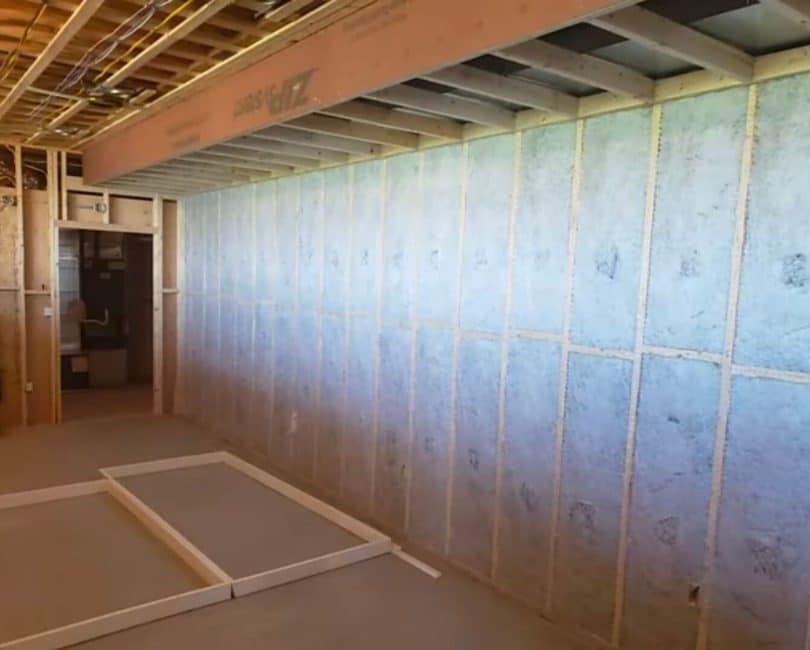Introduction
Understanding whether you can blow in mineral wool insulation is crucial for proper installation, ensuring effectiveness while avoiding potential hazards. Blow-in mineral wool insulation is indeed a viable option, offering versatility and soundproofing capabilities for homes. Employing a blow-in insulation blower with appropriate safety measures is advisable to mitigate risks.
Is it Possible to Blow-in Mineral Wool Insulation?
Mineral wool insulation, characterized by its loose-fit composition of tiny particles, is conducive to blowing. Blowing insulation is commonly utilized to fill existing spaces, attics, and challenging-to-reach areas. While it is feasible to undertake the installation personally, many opt for professional assistance due to the requirement for specific machinery and the potential health risks associated with inhaling insulation particles.
Method of Blow-in Mineral Wool Insulation
1. Preparation:
– Ready the area by removing damaged insulation, conducting necessary repairs, adding vent chutes, and sealing any leaks with a caulk gun.
2. Measurement:
– Measure up from the drywall to mark the desired insulation depth. Ensure even coverage by repeating this process every few trusses.
3. Protective Gear:
– Don protective gear, including appropriate clothing, and plug in the insulation machine.
4. Application:
– Spray the insulation while a helper loads it into the machine, ensuring even distribution throughout the designated area.
5. Installation Steps:
– Locate studs using a stud finder, cut small holes between studs near the top of the wall, and insert the blower hose to fill wall cavities. Seal the holes after completion.
Considerations for Security
Blown-in insulation installation, if undertaken incorrectly, poses risks. Hiring a professional, especially for larger areas or for those inexperienced in installation, is a prudent choice. Health issues such as asthma, skin rashes, and serious illnesses can arise if safety precautions are not observed. Additionally, the risk of fire exists if insulation is improperly used or of an incorrect type.
Is a Vapor Barrier Required for Mineral Wool Insulation?
Mineral wool’s density and water repellency eliminate the necessity for a vapor barrier during installation. Unlike materials prone to moisture absorption, mineral wool retains its heat insulating properties even when wet.
Is Mineral Wool the Same as Rockwool?
While the terms “mineral wool” and “Rockwool” are often used interchangeably, they are not identical. Mineral wool is a broader category that includes Rockwool. Rockwool, made from basalt, is a specific type of mineral wool. Another form of mineral wool is slag wool, created from iron ore waste. Rockwool is commonly used in construction, while slag wool, perceived as lower-quality and more affordable, finds use in industrial settings.
Best Type of Blown-in Insulation
The choice between cellulose, fiberglass, and mineral wool for blown-in insulation depends on various factors. Considerations include R-value, weather resistance, and overall cost.
1. R-Value:
– The thermal resistance of insulation, measured by its R-value, indicates its ability to dissipate heat. Cellulose leads with an R-value of 3.7 per inch, followed by mineral wool at 3.3 and fiberglass at 2.5.
2. Weather Protection:
– Mineral wool excels in weather protection due to its water repellency, making it resistant to mold growth and maintaining insulation effectiveness even when wet.
3. Cost:
– While fiberglass and cellulose are generally less expensive, mineral wool, priced slightly higher, offers durability and weather resistance that may justify the additional cost.
4. Location Suitability:
– Mineral wool is ideal for outdoor use and heated crawl spaces, while fiberglass’s flexibility suits irregular spaces, and cellulose is environmentally friendly and suitable for quick installations.
Final Thoughts
Blowing in mineral wool insulation provides an effective solution for enhancing home insulation. For those in the United States, K2 Heating and Air Conditioning offer a diverse selection of mineral wool or Rockwool blown insulation. Seeking assistance from local HVAC service providers ensures access to quality materials suited to specific budget, application, and construction needs. Elevate your home’s insulation with blown-in mineral wool and enjoy the benefits of improved energy efficiency and comfort.
Disclosure: We may get commissions for purchases made through links in this post.







